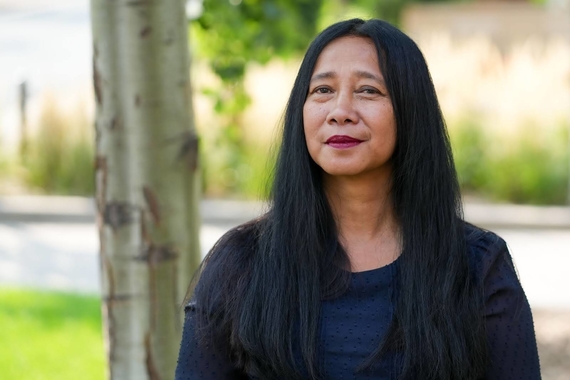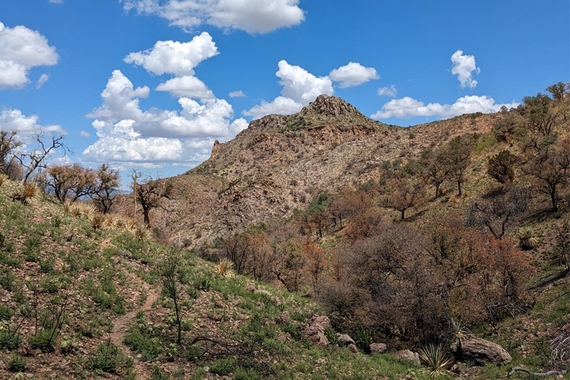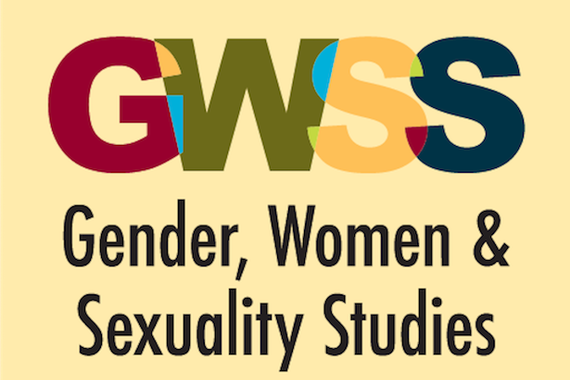An Activist in the Making
For Ray Barney, a senior at the University of Minnesota, shared liberation is the plan. “I didn’t come to college to get a good job so I can buy a house,” they explain. “I came to think about and curb our violences, so I structured my education around social justice.”
They are pursuing a double major in gender, women & sexuality studies (GWSS) and Asian languages & literatures (ALL) with a subplan in Chinese, along with a minor in art. “My experience in the art department taught me to think creatively, GWSS taught me critical thinking, and ALL has broadened my understanding of the world by lessening the Eurocentrism of my education,” explains Barney. “I am very grateful to each of these disciplines, as they’ve all had an enormous impact on my education.”
Space for Differences & Diversity
The GWSS major, in particular, provides a chance for Barney to further explore theories of politics, such as intersectionality, which focuses on the interrelations of gender, race, economic class, and other social hierarchies. “GWSS holds space for difference,” they explain. “That’s what I love about the department.” They appreciate that GWSS is an interdisciplinary field, built from theory and praxis in many areas of life. Exploring societal power and privilege dynamics, GWSS classes give students the necessary tools to address issues of violence and injustice across a variety of contexts. As Barney puts it, “the knowledge gained in GWSS courses stays with you, and that’s exactly what learning is supposed to do.”
Barney became even more connected to their discipline by working in the GWSS department as a student administrative assistant during their sophomore year. Through this position, they got to know others in the department, from fellow students to administrators to faculty. “I gained a lot from this opportunity,” Barney says. “It really humanized the people in academia and administration for me. I learned that while these people engage with critical theory and have PhDs, they’re also regular people in an office who ask you about your weekend. I value my time there.”
Making a Difference
Barney’s college career has been characterized by numerous projects involving communities they are a part of or are in solidarity with. They’ve been involved with causes ranging from “the recent calls for the University of Minnesota to match the Minneapolis and Saint Paul minimum wage of $15 for student workers” to disability activism, trans liberation, and prison-abolition activism.
One such opportunity is working in the UMN libraries’ Jean-Nickolaus Tretter Collection in Gay, Lesbian, Bisexual, and Transgender Studies, where Barney is a student archive assistant. The collection houses over 3,000 linear feet of material about the LGBTQ experience and Barney’s job is to catalog and organize newly acquired materials in a way that makes sense for researchers and anyone else navigating the archive. “It is really interesting work,” says Barney. “It’s a keyhole into how history is actually made. The way you describe a record and organize it in an archive will impact how it’s used and who is going to request it.”
Barney is also the publicity coordinator for the Critical Disability Studies Collective (CDSC), a collaborative group affiliated with CLA’s Race, Indigeneity, Gender & Sexuality (RIGS) Initiative that promotes the understanding of disability in relation to other vectors of oppression, such as race, class, gender, sexuality, and citizenship. “I really like the space that the CDSC provides because we make a point to foster community and network with anyone who is interested in disability studies—not just academics,” Barney says. They are currently the only undergraduate student involved with the group and are involved with graphic design and poster distribution. In keeping with the group’s purpose, they ensure that the materials they produce are fully accessible. “I make sure that the layout is going to make sense to a screen-reader and that the color contrast is high enough so that someone with visibility-access needs can receive the information,” Barney says. “It’s my first time I’ve had to design with accessibility in mind, which is probably not something to be proud of.”
And in their role as assistant to the curator of the Weisman Art Museum’s Target Studio for Creative Collaboration, Barney supported collaborations between artists and scholars, producing what they call “responsible artwork.”
For example, artist in residence Daniel McCarthy Clifford (MFA ‘18, art) creates artwork about American institutions and the politics, histories, and material realities of disciplinary structures. Barney spent nine months contacting correctional departments in all 50 states to compile and format a list of nearly 16,000 publications disapproved by state-run incarceration facilities. “Some state-run correctional facilities don’t keep a centralized list because it’s incriminating,” Barney mentions. “It’s a tool for someone to say ‘this is proof that there’s something going on here.’ Neglectful record-keeping is not the level of accountability I want from my government, or from anyone’s government.” Getting their hands on the information wasn’t the only challenge. “The data was a mess. One prison banned a book of T’ai Chi Chu’an, and they recorded it as Ty of Chihuahua,” Barney recalls. “Or they would have a two-hundred-page spreadsheet of titles, which is great because it shows they care. But they’d send it to me as a PDF and I’d have to manually enter or fix large portions of the data in our spreadsheet since I don’t have software that can handle a clean conversation of a dataset that big. It was actually a great research experience; even though it sounds tedious, it was rewarding in the end.” UMN librarians, including Betsy Friesan, analyzed the data and located 600 titles from the list that are available here on campus, which were displayed in a December 2018 exhibit. That was the first time information about disapproved publications in state-run facilities in the US has been publicized in this way and is just one element of Clifford’s ongoing work on this topic—all made possible through Barney’s hard work.
Waking Up with Purpose
With the tools and opportunities they’ve gained during their time at the University of Minnesota, Barney works towards shared liberation.
“I wake up to do work that I know is important to me and to my loved ones,” Barney explains. "I also wake up with the hope that tomorrow will be an easier day to wake up to.”
This story was written by an undergraduate student in CLA.



